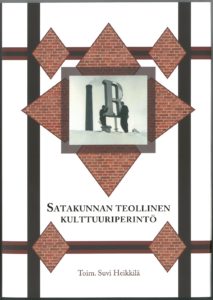

For an article based on more recently discovered archive materials and research see Irina Takala, “Finny-immigranty,” Finny v Rossii: istoriia, kul'tura, sud'by (Petrozavodsk: Izd-vo Petrozavodskogo universiteta, 1998), pp. 1091– 1116 Michael Gelb “The Western Finnic Minorities and the Origins of the Stalinist Nationalities Deportations,” Nationalities Papers, Vol. See Michael Gelb, “‘Karelian Fever’: The Finnish Immigrant Community During Stalin's Purges,” Europe-Asia Studies, Vol. Michael Gelb has also examined Finnish emigration. Studia Historica 58 (Helsinki: Suomen Historiallinen Seura, 1998), pp. Tauno Saarela and Kimmo Rentola, Communism National and International. tammikuuta 2007 Jyväskylä) oli suomalainen historiantutkija, Jyväskylän yliopiston historian professori ja saman yliopiston historian laitoksen isä. See also Markku Kangaspuro, “Nationalities Policy and Power in Soviet Karelia in the 1920s and 1930s,” in ed. Stalin approved the transfer of foreign labour to Karelia despite the fact that the security authorities already viewed Finns as a security threat in the border republic. Suomen historian pro gradu -tutkielma, Jyväskylän yliopisto 2005.

Anu Vertanen: Rintamalta Ratakadulle: suomalaiset SS-miehet kommunistisen Valpon kohteina 1945-1948. The work also deals with the decisive debate over the transfer of Finnish North Americans to Karelia between Stalin and the Finnish leadership in Karelia, Edvard Gylling and Kustaa Rovio. Mauno Jokipii: Hitlerin Saksa ja sen vapaaehtoisliikkeet: Waffen-SS:n suomalaispataljoona vertailtavana. Näin Suomi olisi tarkoituksellisesti jäänyt kauas Saksan asettamasta tavoitteesta, jonka mukaan oikeistoaineksia olisi pitänyt olla noin kaksi kolmasosaa Saksaan lähteneistä. This work is the first monograph concerning the Finnish period, 1920–1939, in Soviet Karelia, which is based on archive material now available in Moscow, St Petersburg and Petrozavodsk. Kirjassaan Jokipii esitti, että suomalaisista SS-miehistä enintään viidennes olisi ollut oikeistoradikaaleja, ja värvääjät karsivat hakijoista pois ääriaineksia. Bibliotheca Historica 60 (Helsinki: SKS, 2000). Nationalismi ja suomalaiset punaiset Neuvostoliiton vallankäytössä vuosina 1920–1939. Find out where Mauno Jokipii was born, their birthday and details about their professions, education, religion, family and other life details and facts. See Markku Kangaspuro, Neuvosto-Karjalan taistelu itsehallinnosta. This process is experimental and the keywords may be updated as the learning algorithm improves.1. These keywords were added by machine and not by the authors. MAUNO JOKIPII, Suomen kreivi- ja vapaaherrakunnat Earldoms and Baronies in Finland I-II(Historiallisia Tutkimuksia, XLVIII: 1-2),published by the Finnish Historical Society, (Helsinki, 19, pp. So where did this fiery behaviour come from, and what might have caused it? What was its social context? And does the story of Anna Mårtensdotter tell us something more general about violence in Western Finland? Keywords Her grandfather had been a scribe and her father, uncle, and grandmother had held the post of local constable in Eurajoki parish for decades.

2 The knowledge that there was a tradition in her family for its members to hold positions of trust in the local administration throws the contentious behaviour of her and her siblings into stark relief.

The number of times and way she handled appearing in court reveals her active and aggressive agency. Against her brother Valentin, Anna engaged in an exceptional dispute that lasted for decades and covered a variety of matters. Tapani ItrantaAlf SilfverbergMauno JokipiiPentti KoivistoPertti Kilpel13 artiklaAleksis KiviDolly nyttelijtrEnsio Suominen Kuvat elvtHylkvtk. These records tell of her offensive behaviour: neighbours complaining about her physical violence, insults, appropriations, and even tearing roofs down. The most prominent of them is Anna Mårtensdotter who appeared in court 28 times in the four years for which we have the court minutes still intact. 1 In our study on the women from that same family, Virpi Nissilä and I have encountered about 100 court cases from the 1620 to the 1650s, in which six women from two generations have been present. “The lengthy quarrels over inheritance hint that these people had fiery tempers”, wrote Mauno Jokipii in his pioneering article on the history of the Lavila family-one of the prominent families of freeholders in Lower Satakunta.


 0 kommentar(er)
0 kommentar(er)
